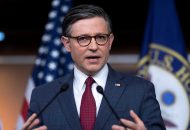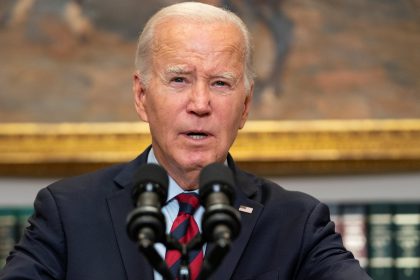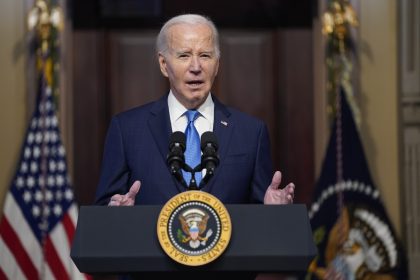Fixing Unemployment Insurance for Better Economic Recovery

WASHINGTON — Emergency expansions to Unemployment Insurance provided critical support to workers across the country during the early months of the pandemic. But the major component of these expansions, an additional $600 in weekly benefits, expired at the end of July. With lawmakers continuing to be in disagreement about how to balance financial relief with rebuilding the labor market, representatives from the Bipartisan Policy Center, the National Employment Law Project, and American Action Forum came together to discuss the role of UI in the nation’s continued coronavirus response and how the system might best work going forward.
“We might have been better off figuring out how to keep people in their jobs, but this is the road that we’ve chosen,” said Michele Evermore, senior policy analyst at the National Employment Law Project. “Every state entered this recession with too little funding and with clunky [UI] systems… There are still millions waiting for benefits from as far back as March.”
For those who have received them, UI benefits have been critical financial support while disaster spread and labor loss prevented workers from going to their jobs. And as the nation’s economic outlook remains highly uncertain, lawmakers are at a stalemate over future benefits.
The Congressional impasse leaves many confused about why the additional $600 in benefits needed to phase out — or how the $600 number was reached in the first place.
“A lot of economists were calling for 100% income replacement… because there was an actual shutdown of the economy,” explained Evermore, who said that figuring out how to replace 100% of income would have complications with states operating off antiquated computer systems and was impossible as there were record numbers of new claims coming in. Instead, Congress figured the average weekly wage for UI last year was around $970, and the average weekly benefit was around $300. The difference of $600 was the number chosen to replace the difference in income or, the replacement rate.
“If the goal was to get everyone to stay home while maintaining the capacity to have a good standard of living, it was entirely successful,” said Douglas Holtz-Eakin, president of the American Action Forum. “The initial impact is really clear in terms of contributing to the financial well-being of the household sector.”
However, he argued that with this high replacement rate, benefits exceeded wages by a large degree. “[The additional $600 was] a rate well over 100% for two-thirds of workers… In a normal labor market, that’s a big impediment to return to work, though obviously we weren’t in a normal labor market.”
Evermore, however, asserts that the emergency benefit “didn’t have an impact on behavior.”
“It is obvious that the $600 — from every study that I’ve seen — wasn’t a disincentive effect,” she said. “People during a pandemic value stability and the stable benefits that a job has to offer.” She suggested that any consideration of UI benefits has to take into account the value of fringe benefits and the value to replace them on the open market.
“Like all great debates in economics, there’s precious little data to resolve it,” said Holtz-Eakin, who despite believing that the funds may be a disincentive to work is in favor of restoring the $600 for as long as the public health crisis continues.
“To err on the side of too little is a little too dangerous than to err on the side of too much,” he said.
In the meantime, in the absence of Congressional action… almost all states have been approved for Trump’s Executive Order, which dedicated $44 billion from FEMA’s disaster relief fund to create a $300 weekly UI supplement. This disaster relief fund is rapidly depleting at a time when wildfires and hurricanes are also dominating the news.
“The Executive Order and the lost wages effort is a patch at best,” said Holtz-Eakin, who believes that despite the standstill of the HEROES Act, the nation’s real solution is to establish the nature of a temporary benefit that phases down over time, which gives people some way to set expectations while also considering other labor market incentives.
“[UI benefits aren’t] the only way to do income support to households,” Holtz-Eakin said, pointing out that the CARES Act had other mechanisms, like the Paycheck Protection Program, that ensured people had income support, “but we didn’t do a good job executing on those fronts.” As time goes on and the nation has long spells of unemployment, he worries that UI expansions alone will prove to be inadequate support for demand in the labor market leading to a sluggish recovery.
This is also because administrative challenges, particularly in the states, further complicated the UI response, causing benefit delays and limiting options for benefit design. Antiquated state systems — IT systems largely run on 1960s COBOL mainframes — have limited options for the federal government to enhance benefits.
“Administrative issues are the reason we’re debating this in the first place,” said Ben Gitis, senior policy analyst at BPC. “Many states are incapable of anything but a flat across-the-board increase [in UI].”
Experts agree there is a need for UI modernization as part of an eventual recovery from the pandemic public health and economic crisis. But they don’t necessarily agree that it’s the best use of time and money in the immediate near-term.
“It’s stunning to see that important policy gets dictated by the capacity to administer,” said Holtz-Eakin. “We’re spending so much with CARES… fixing the UI system is worth it. This is a wake-up call for our capacity to administer the social safety net and provide social insurance.
It should exist in the cloud; it should be accessible with mobile resources.
“Administration upgrades are necessary, which would be true with or without the pandemic. But right now we need to focus on things that have to do with the pandemic, like the level of supplement and when it is phased out, and [the nation should] respond to administrative issues next. We can’t worry about doing a rebuild at this moment. I don’t think that’s the way to go.”























